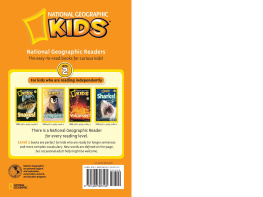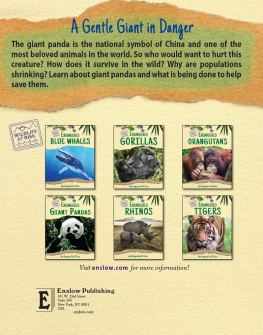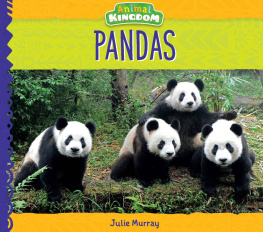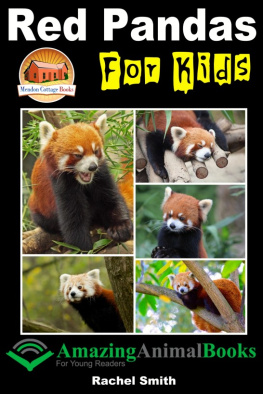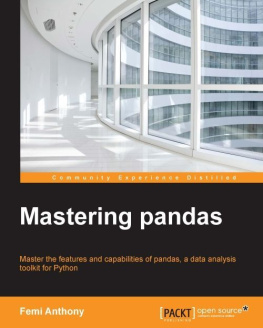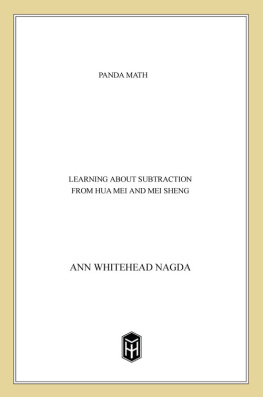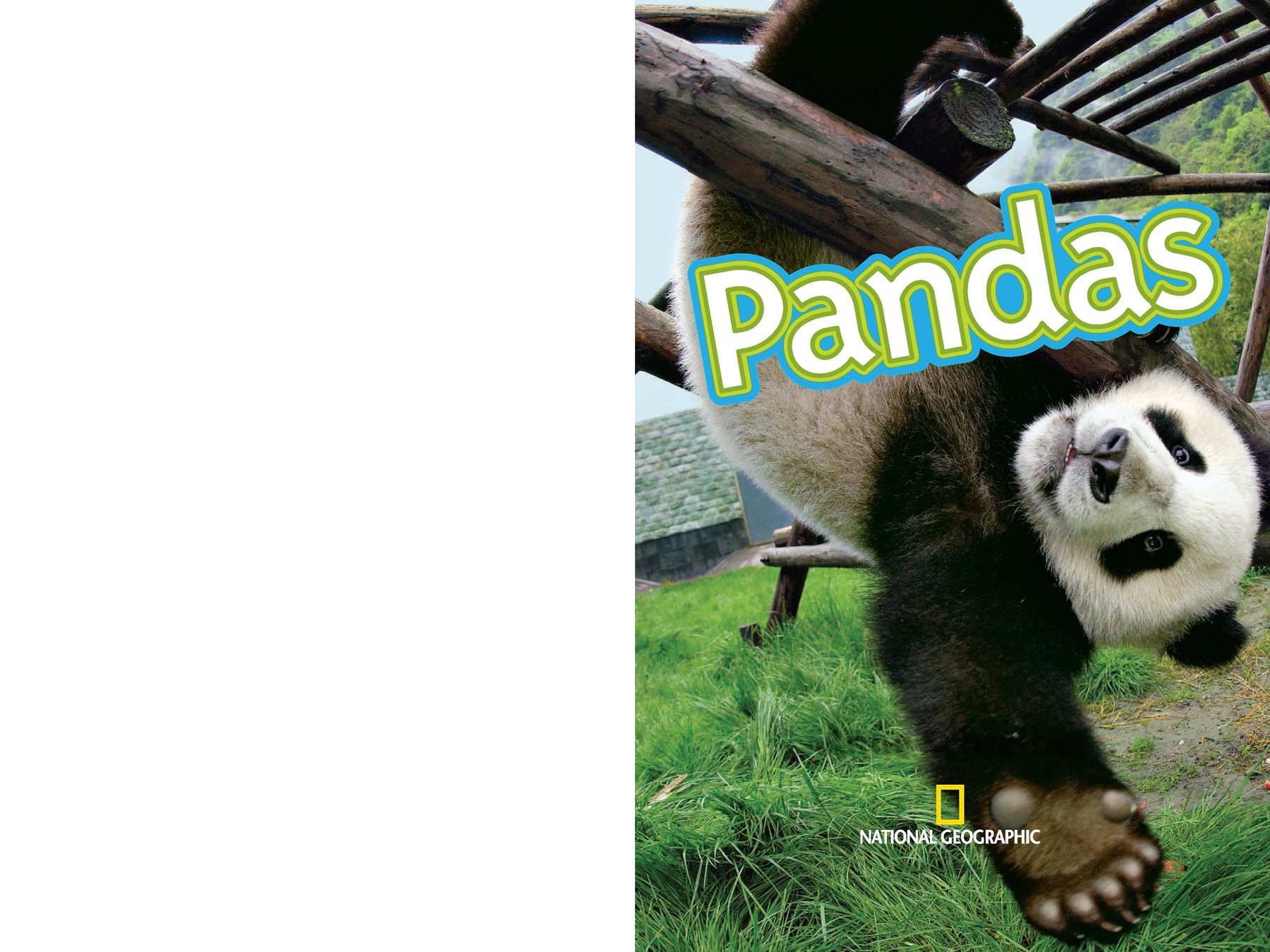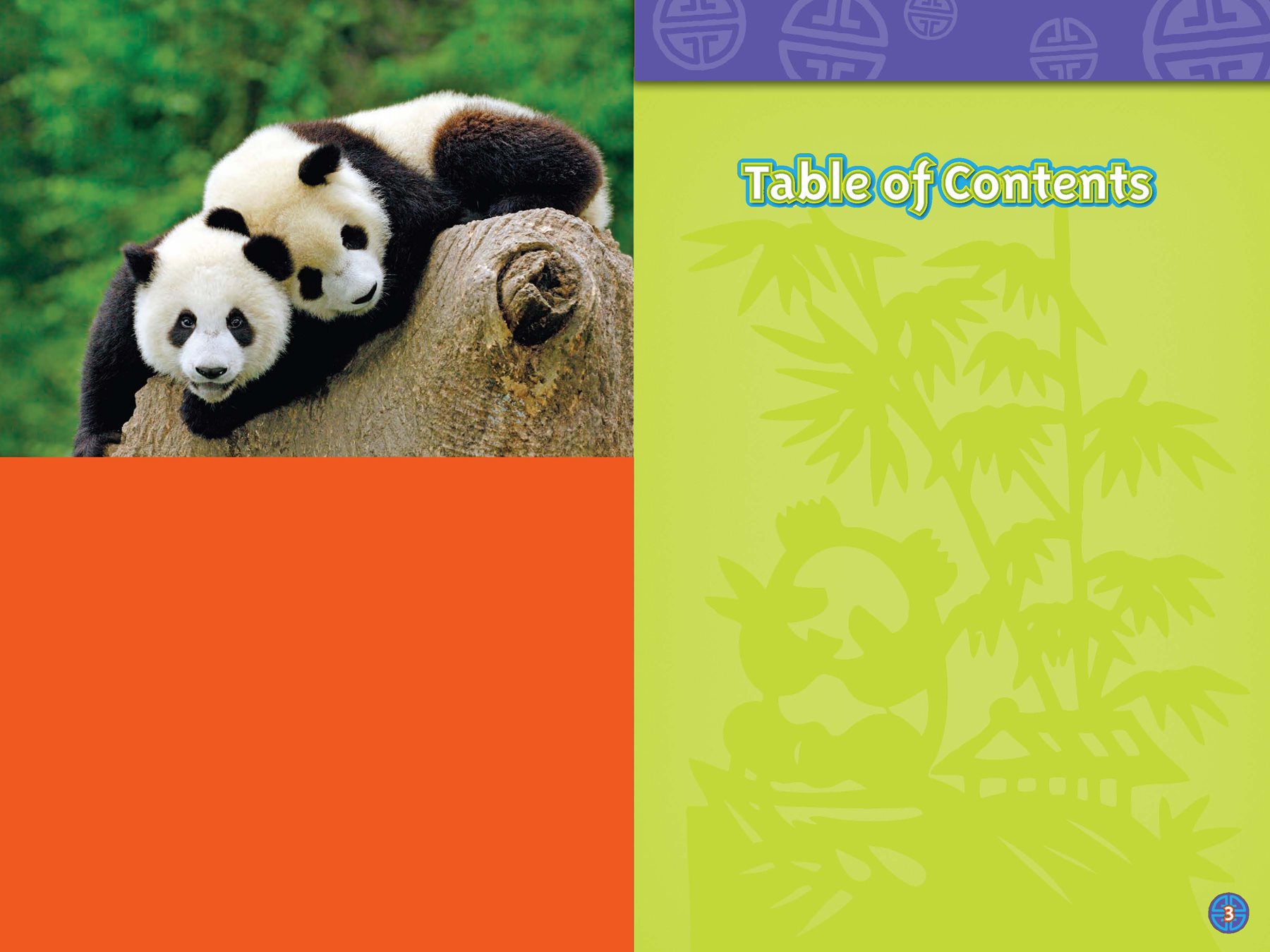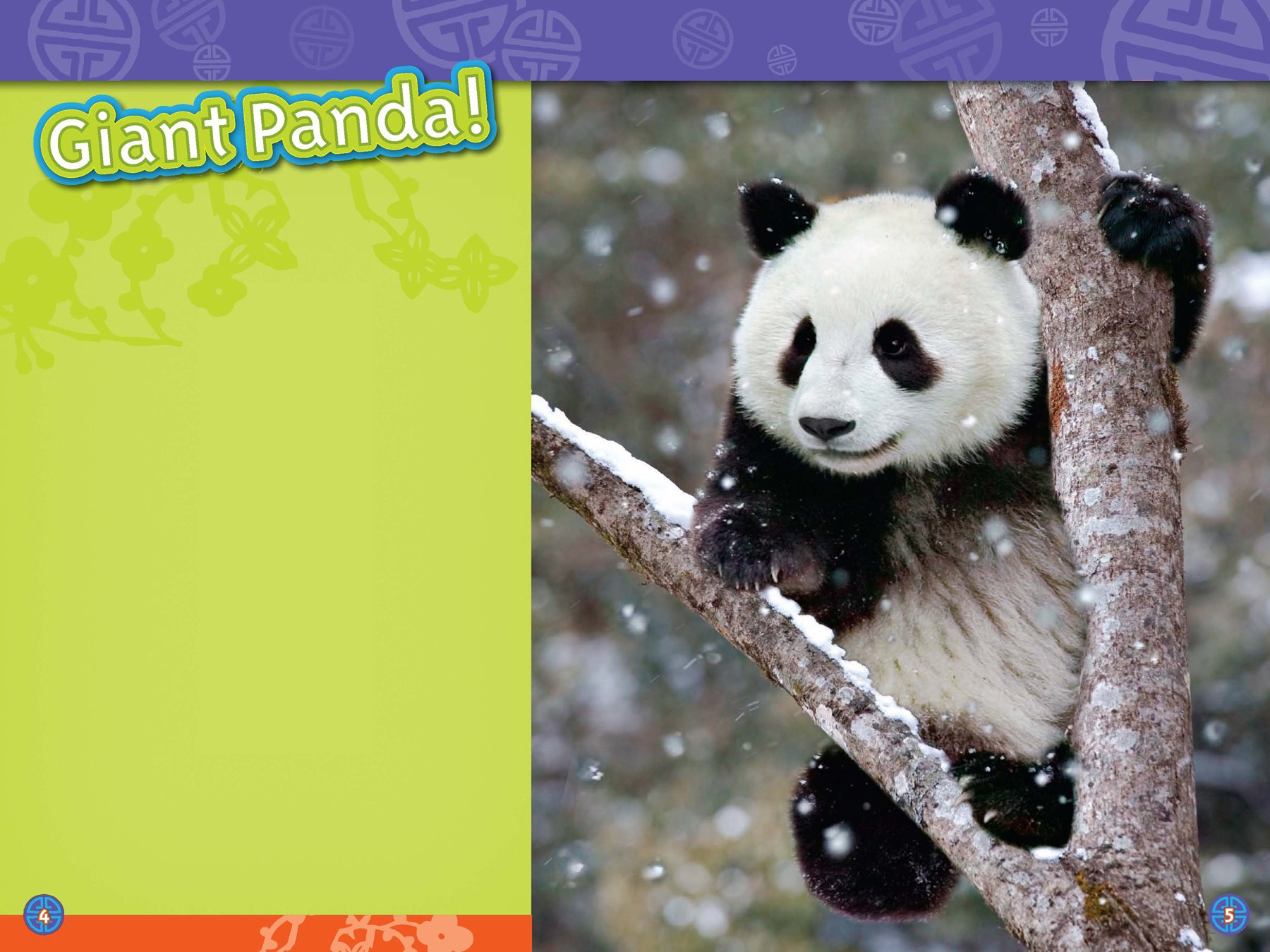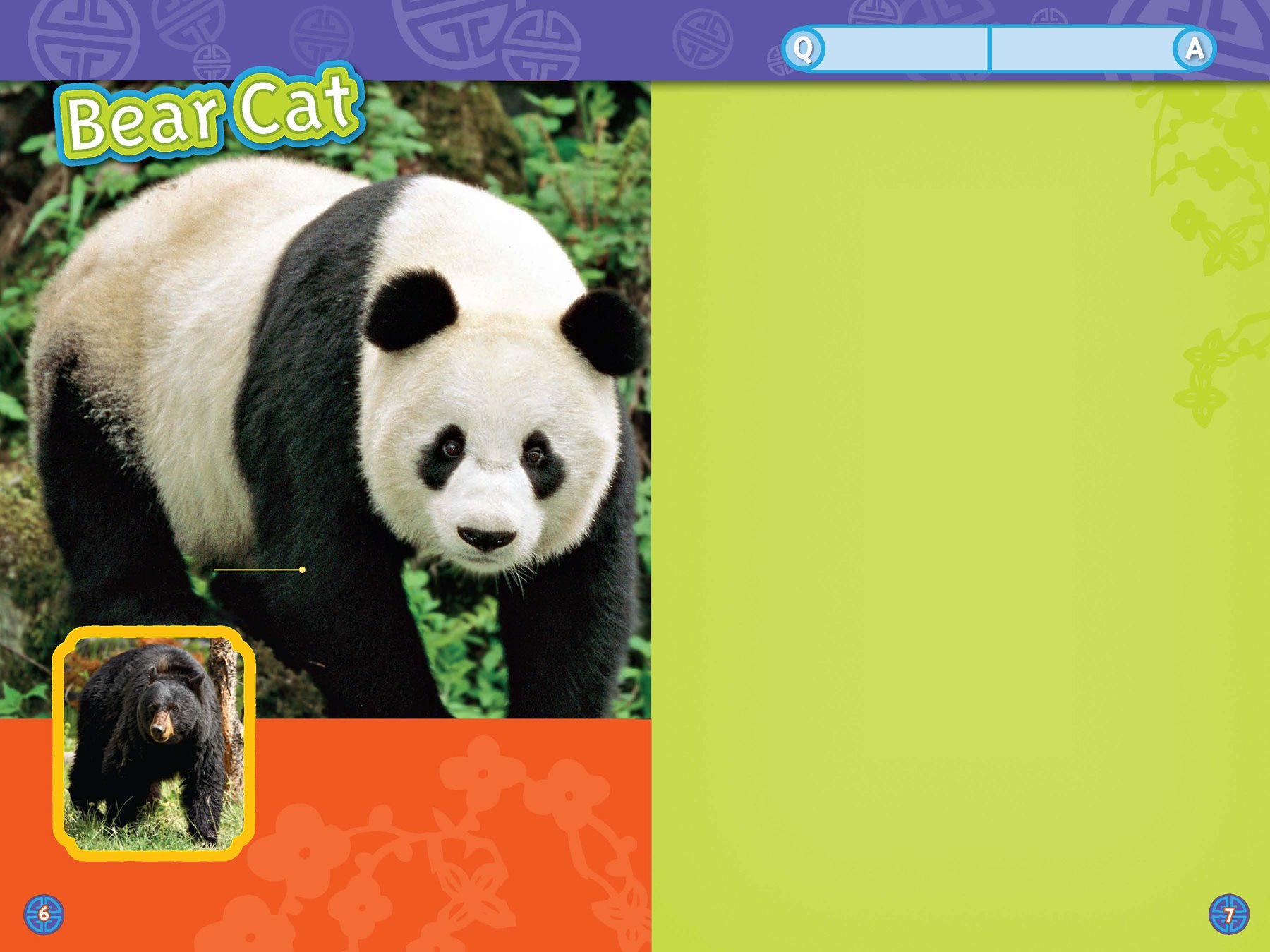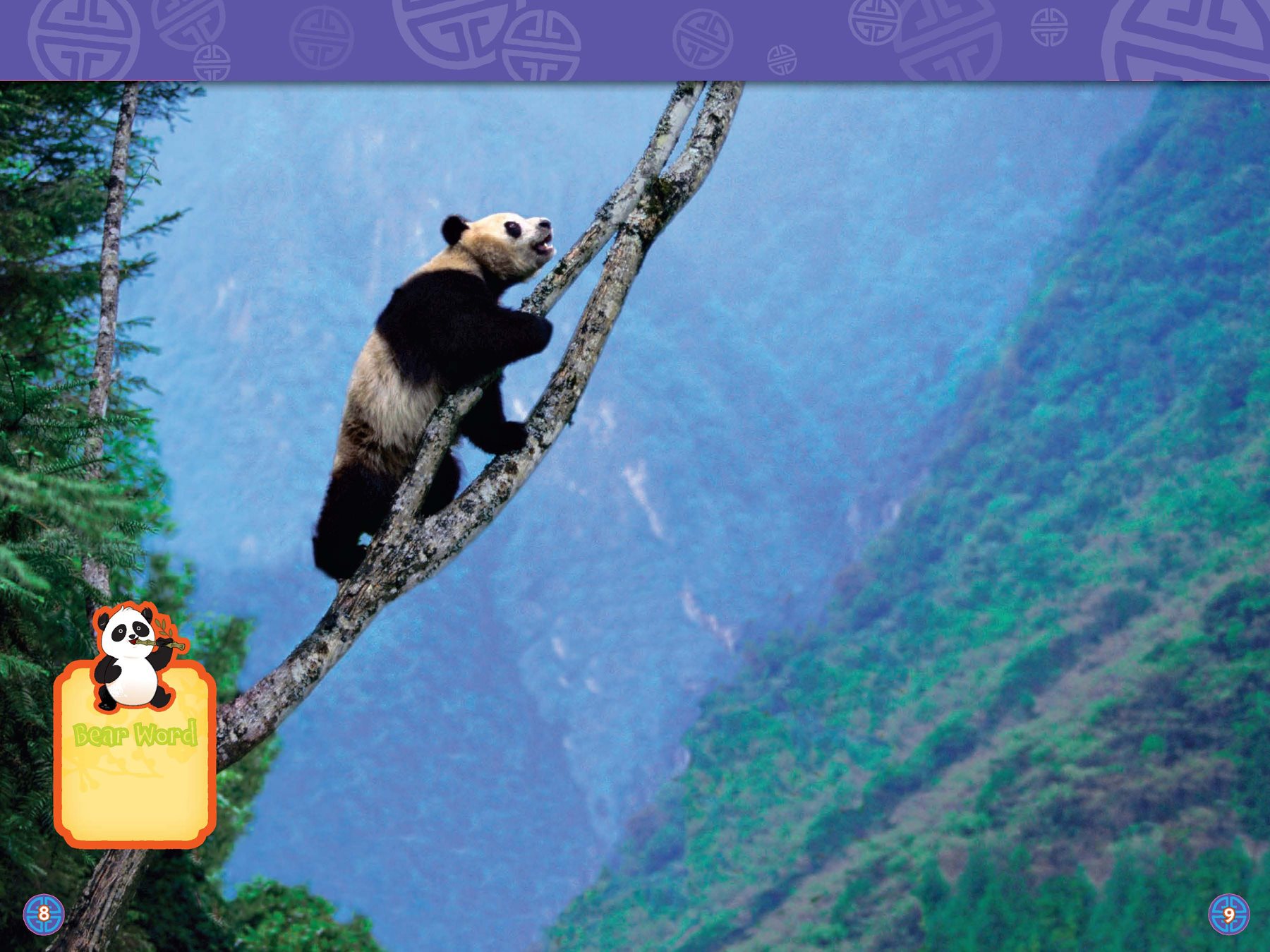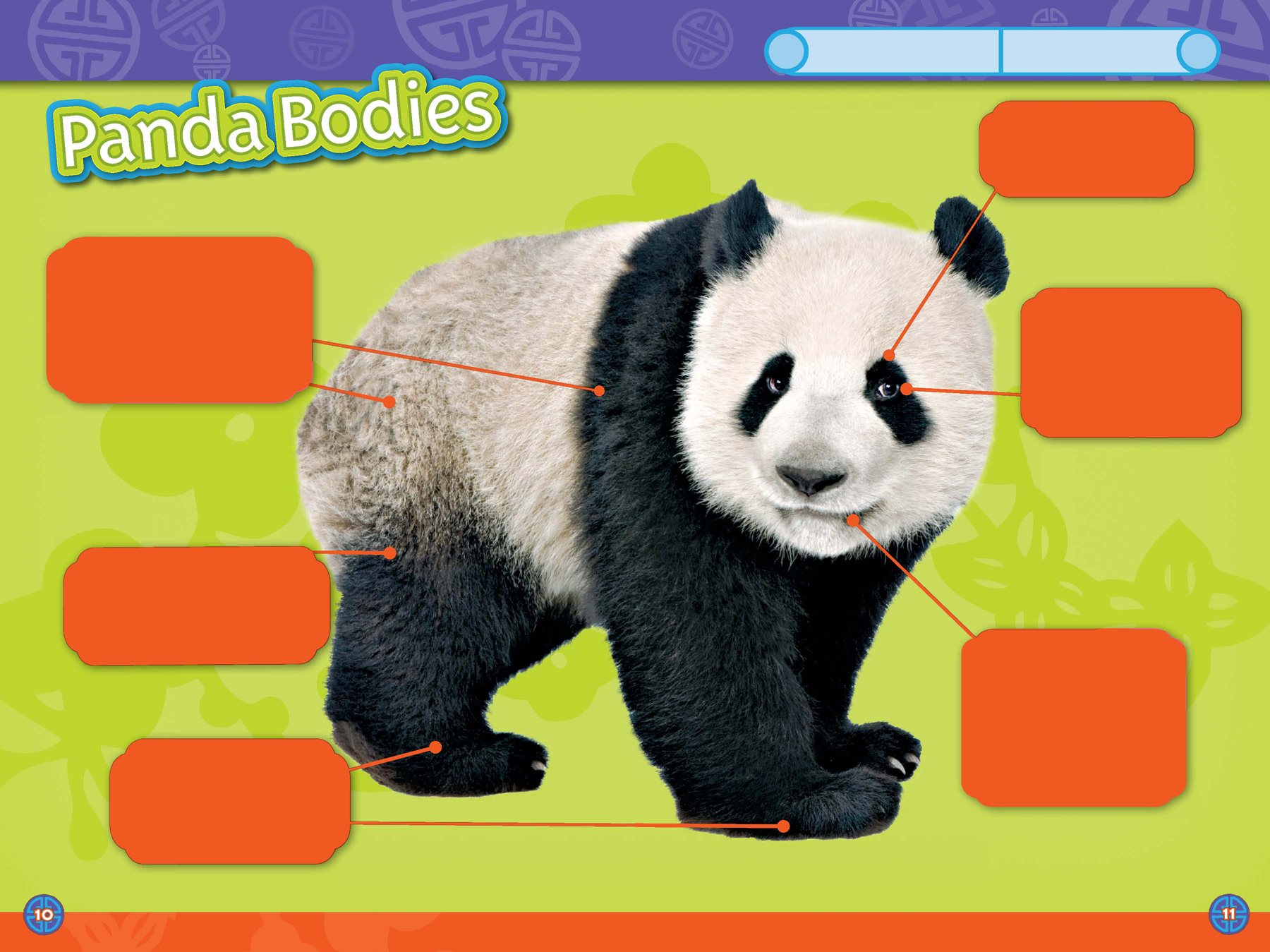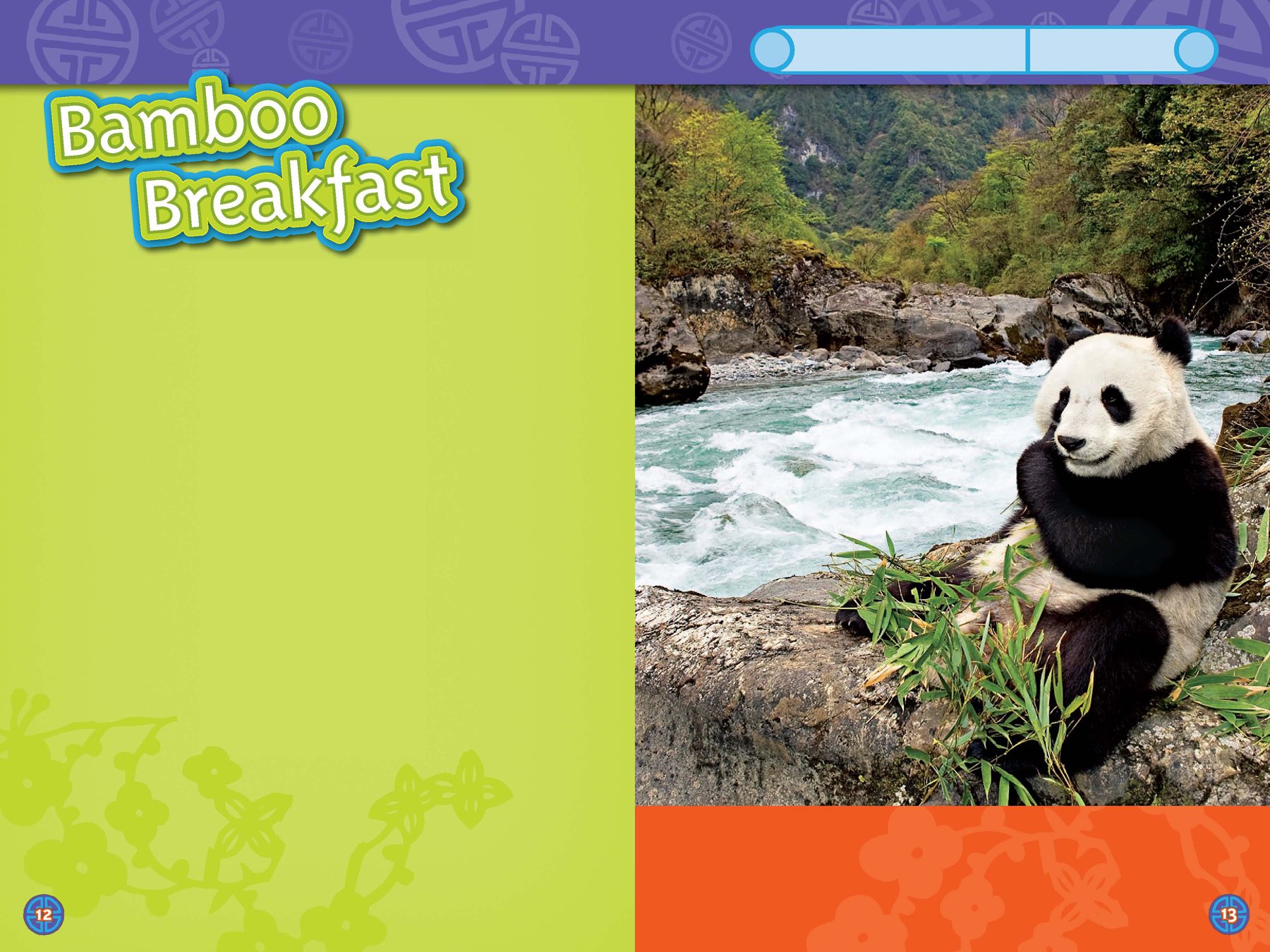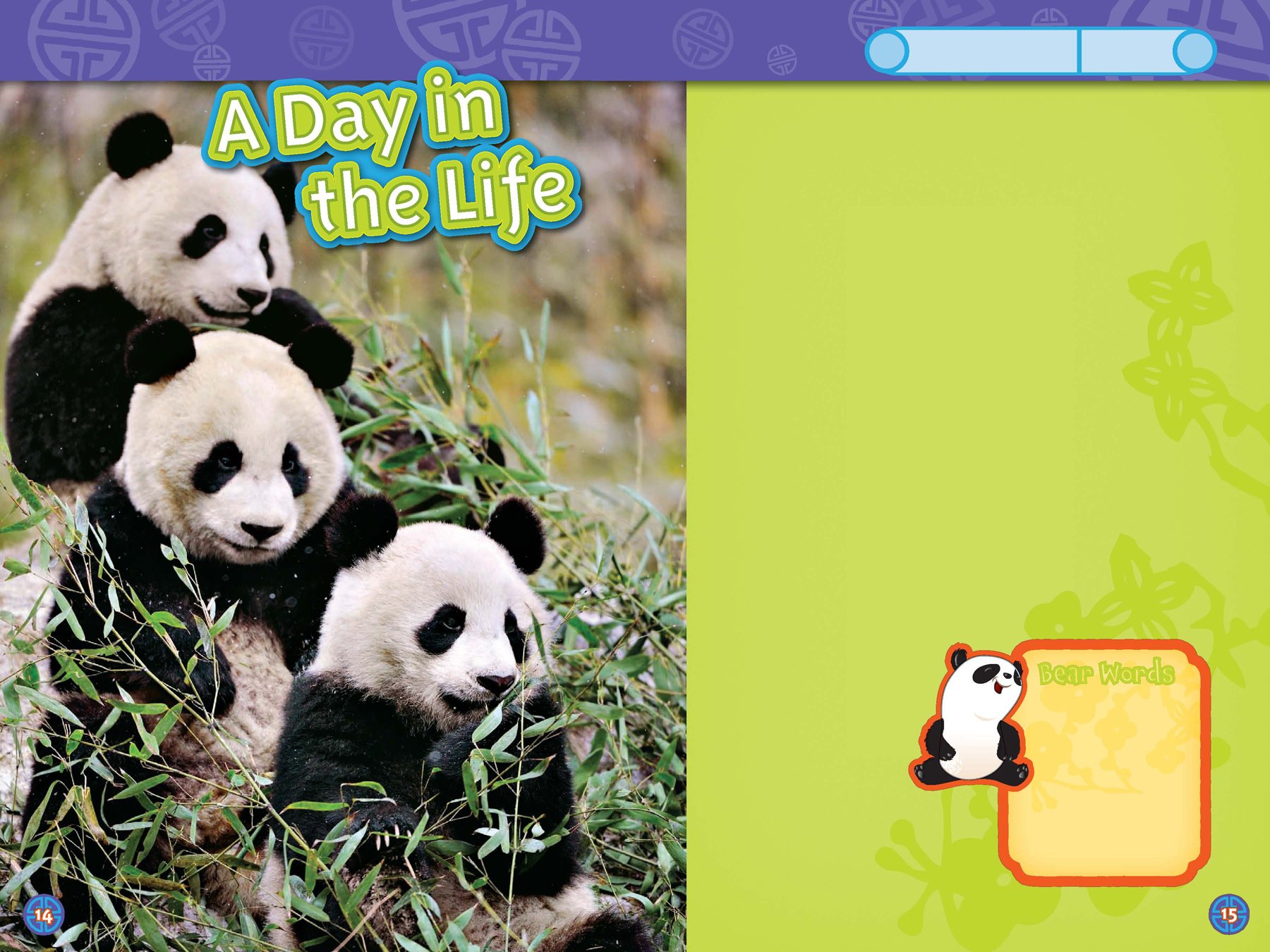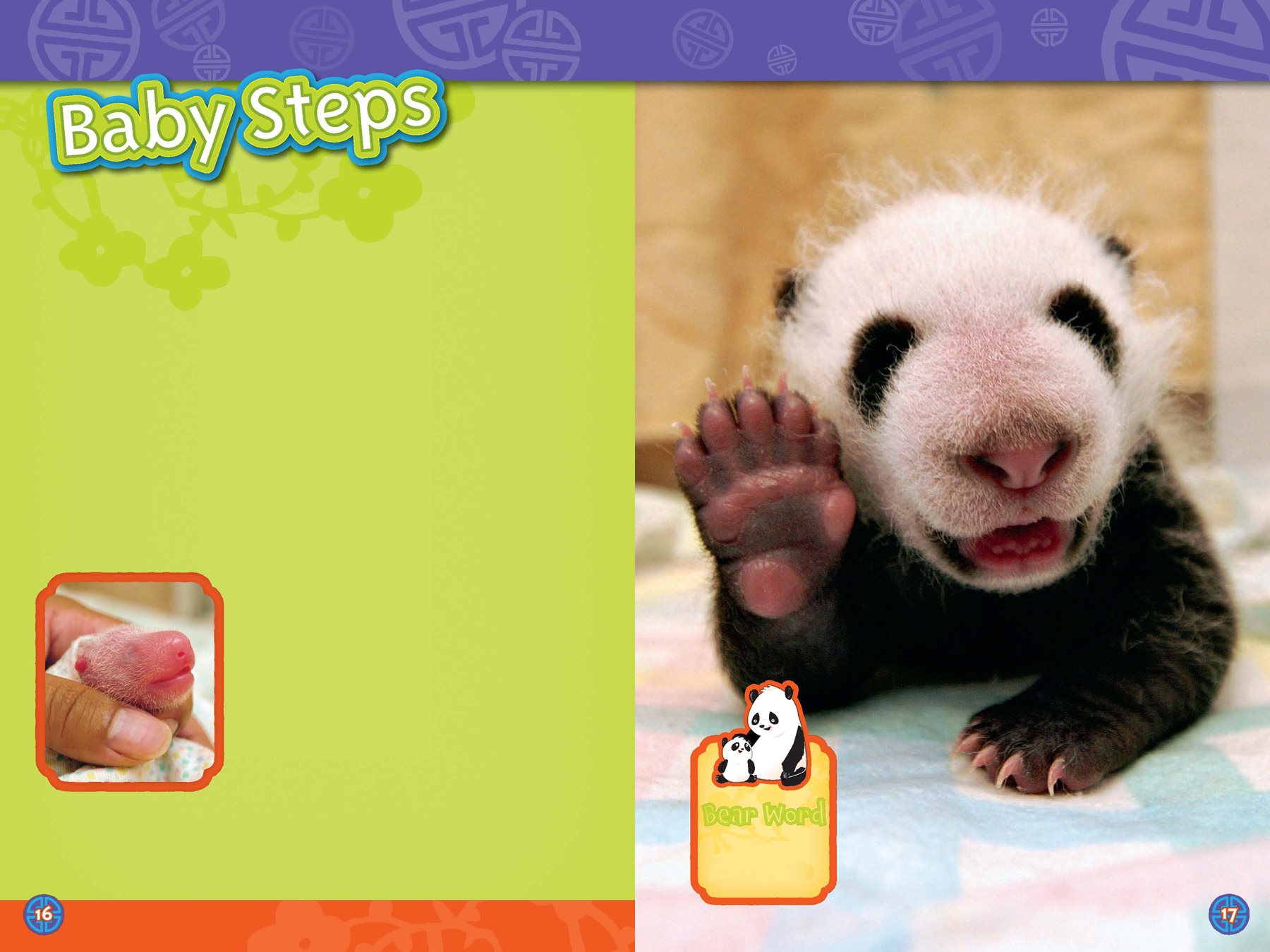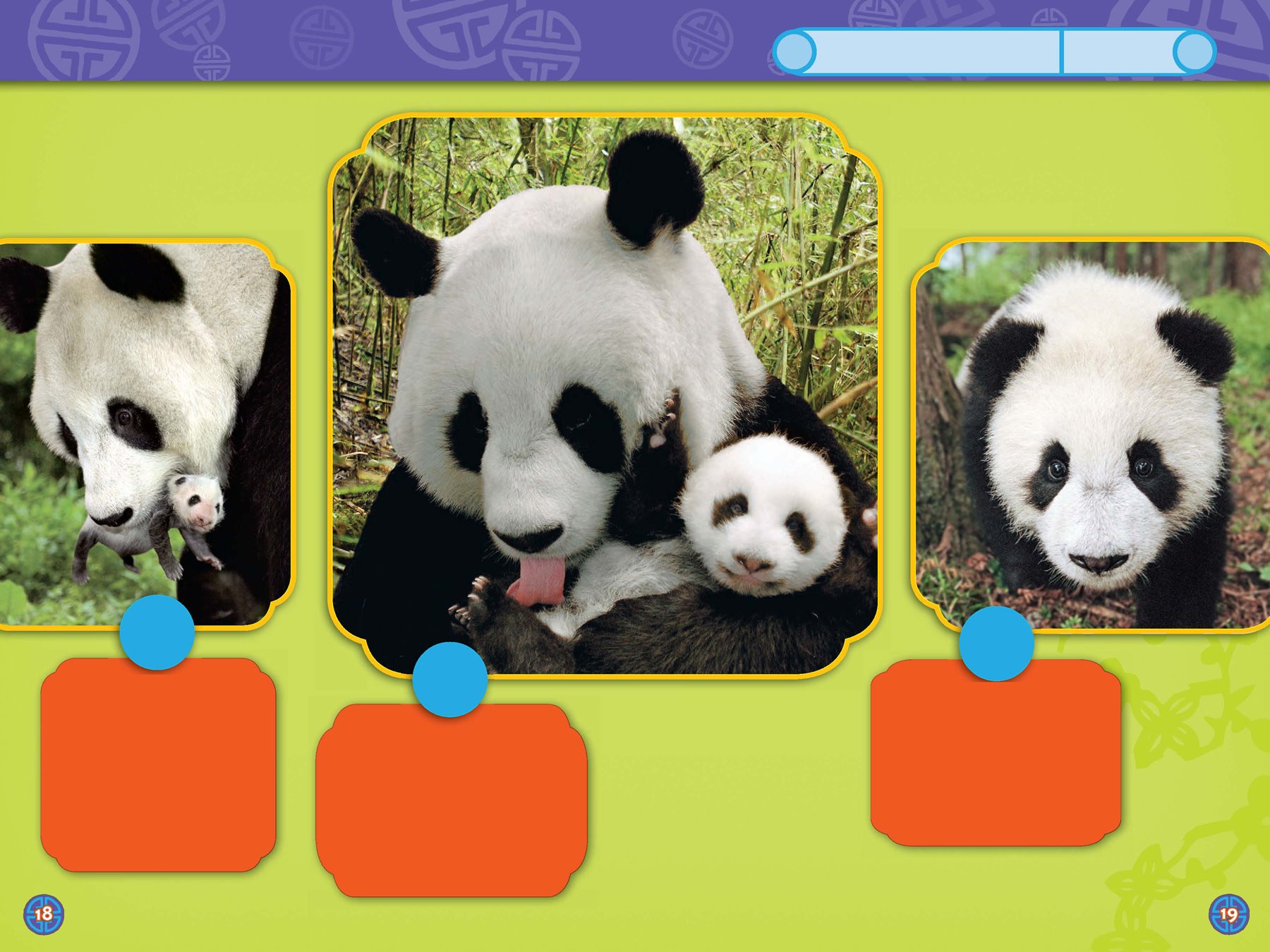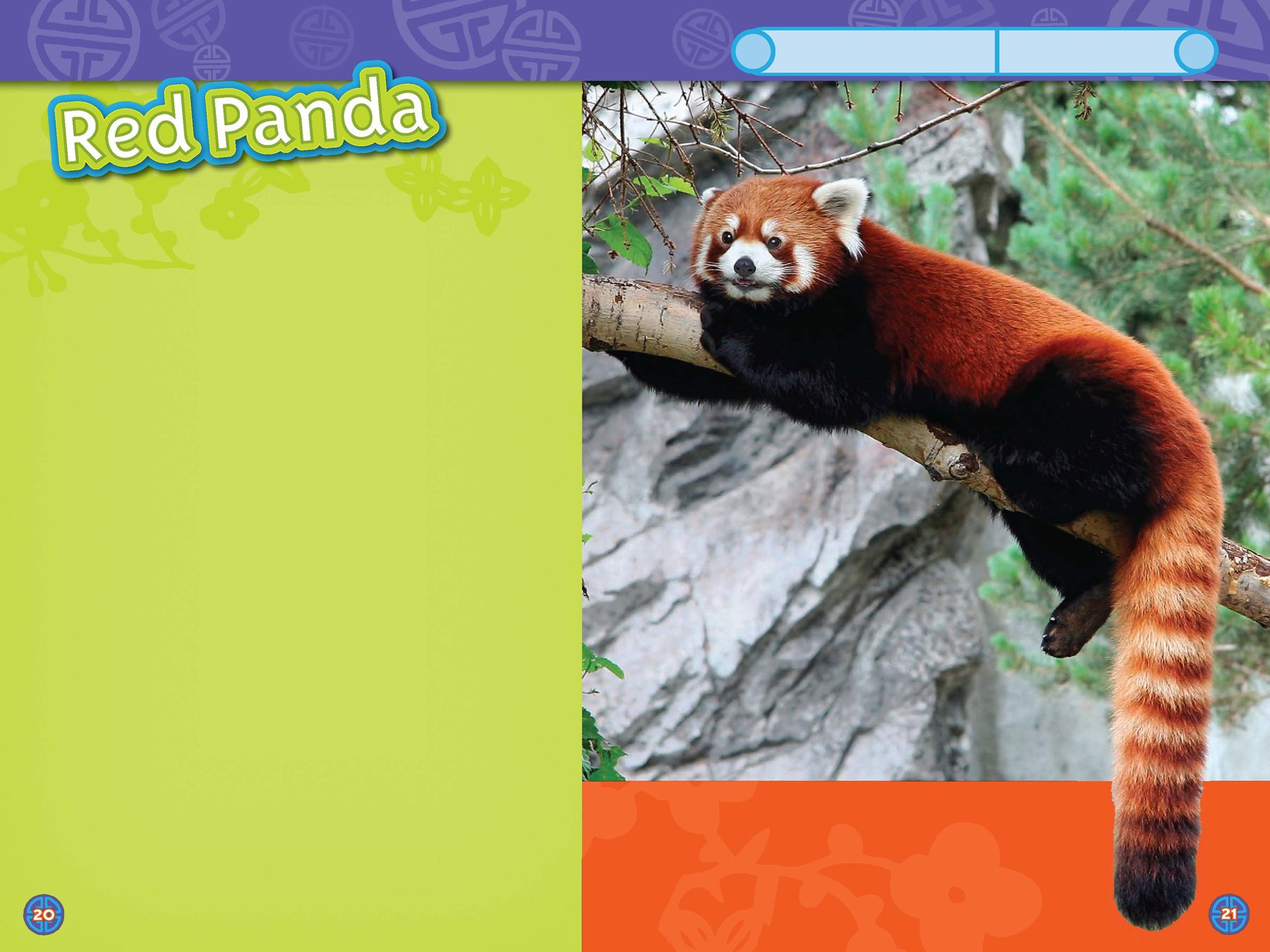Contents
Anne Schreiber
Washington, D.C.
For Lee Lee and Indy
Text copyright 2010 National Geographic Society
Published by the National Geographic Society, Washington, D.C. 20036. All rights reserved.
Reproduction in whole or in part without written permission of the publisher is strictly prohibited.
Library of Congress Cataloging-In-Publication data available upon request.
Paperback ISBN: 978-1-4263-0610-5
Hardcover ISBN: 978-1-4263-0611-2
Printed in the United States of America
Cover, 6, 13, 18 left, 19 right, 28-29 (all),: Lisa & Mike Husar/ Team Husar Wildlife Photography; 1, 22: Katherine Feng/
Minden Pictures/ National Geographic Stock; 2, 32 (top, right): WILDLIFE GmbH/ Alamy; 5: Keren Su/ China Span/
Alamy; 6 (inset): James Hager/ Robert Harding World Imagery/ Getty Images; 8-9, 32 (top, left): DLILLC/ Corbis; 10-11:
Eric Issele/ Shutterstock; 14: age fotostock/ SuperStock; 16, 24-25: Katherine Feng/ Globio/ Minden Pictures/
National Geographic Stock; 17, 18-19, 32 (bottom, left): Katherine Feng/ Minden Pictures; 21: Kent Akgungor/ Shutter
stock; 22-23 (inset), 32 (middle, right): Carl Mehler/ National Geographic Society, Maps Division; 26, 32 (bottom, right):
ChinaFotoPress/ Getty Images; 30-31 (all): Dan Sipple; 32: (middle, left): Kitch Bain/ Shutterstock.
Special thanks to Kirsten Speidel, Assistant Professor of Chinese Language, Swarthmore College, for help with translation
and pronunciation.
09/WOR/1
Look! Up in the tree!
Is it a cat? Is it a raccoon?
No! Its a Giant Panda!
Giant Pandas can climb to
the tops of the tallest trees.
They live in the highest
mountains. They munch on
bamboo for hours each day.
Pandas are a type of bear, but
they seem more like raccoons
or cats. In China, pandas are
sometimes called daxiongmao
(dah shee -ONG mah -oh), which
means Giant Bear Cat.
Like all bears, pandas are strong,
intelligent animals with sharp
teeth and a good sense of smell.
Males weigh about pounds
and are about to feet long.
Giant Panda
Black Bear
Pandas are about the same size as
their black bear cousins, but their
heads are larger and rounder.
Also, pandas cannot stand on
their hind legs like other bears do.
Q
Why did the panda
bark like a dog?
A
He couldnt BEAR to be
called a cat.
Pandas have lived high in the
mountains of China for millions of
years. It is cold and rainy, but there
are plenty of trees and a pandas
favorite plant bamboo.
Pandas used to live in more
places, but today there is less
open land with bamboo. Now
pandas live in six forest habitats
in China.
Pandas are great
tree climbers.
Sometimes they
even sleep up in
the treetops!
Bear Word
Habitat:
An animals
natural home
Pandas are black and
white. This may help
hide panda babies
from predators, or
enemies, in the snowy
and rocky forest.
Their oily, woolly coat
keeps them warm in the
cold, wet forests where
they live.
Hairs on the bottom
of their feet keep
them warm on the
snowy ground.
Their black eye
spots may help
them look fierce.
Just like cats,
pandas can see
very well at night,
when they are
most active.
Pandas have large
teeth and strong
jaw muscles that
are perfect for
crushing tough
stalks of bamboo.
Q
Why dont pandas walk
on their back legs?
A
They are not wearing
any bamBOOTS.
Pandas spend their day sleeping
a little and eating A LOT!
Bamboo for breakfast, bamboo
for lunch, bamboo for dinner,
and bamboo to munch. What
do pandas eat? You guessed it
bamboo! It makes up almost all
of a pandas diet.
Pandas have to eat to pounds of
bamboo each day to stay alive. It takes to
hours a day to find and eat all that bamboo!
Q
Why do pandas like bamboo?
A
Its panda -licious!
Pandas mostly live alone. But
sometimes they hang out in
small groups.
Pandas use different calls to
communicate with each other.
They also leave their scent on
rocks and trees for other pandas to
find.
Bear Words
Communicate:
To pass on
information
Scent:
A smell. Pandas
use scent to
communicate.
Q
What do pandas eat
on Halloween?
A
BamBOO!
Around August or September, a
mother panda will find a den and
give birth. Her newborn cub is
about the same size and weight as
an ice cream sandwich.
Panda cubs are pink,
hairless, and blind at
birth. They spend
the day squeaking,
crying, and drinking
their mothers milk.
Soon, black fur will grow around the
cubs eyes and on its ears and legs.
Bear Word
Cub:
A baby bear
Cubs stay with their
mothers until they
are about two or
three years old.
In a few weeks,
the mother can
leave her cub to
find bamboo.
The baby cries
less and is able to
keep itself warm.
When a cub is about
eight weeks old, it
will finally open its
eyes. But the cub still
cannot walk until it
is three months old.
When the cub is six
months old, it can
eat bamboo, climb
trees, and walk
around, just like
its mother.
Q
What do you call a father bear?
A
A panDAD!
When people think of pandas, they
are usually thinking of the Giant

